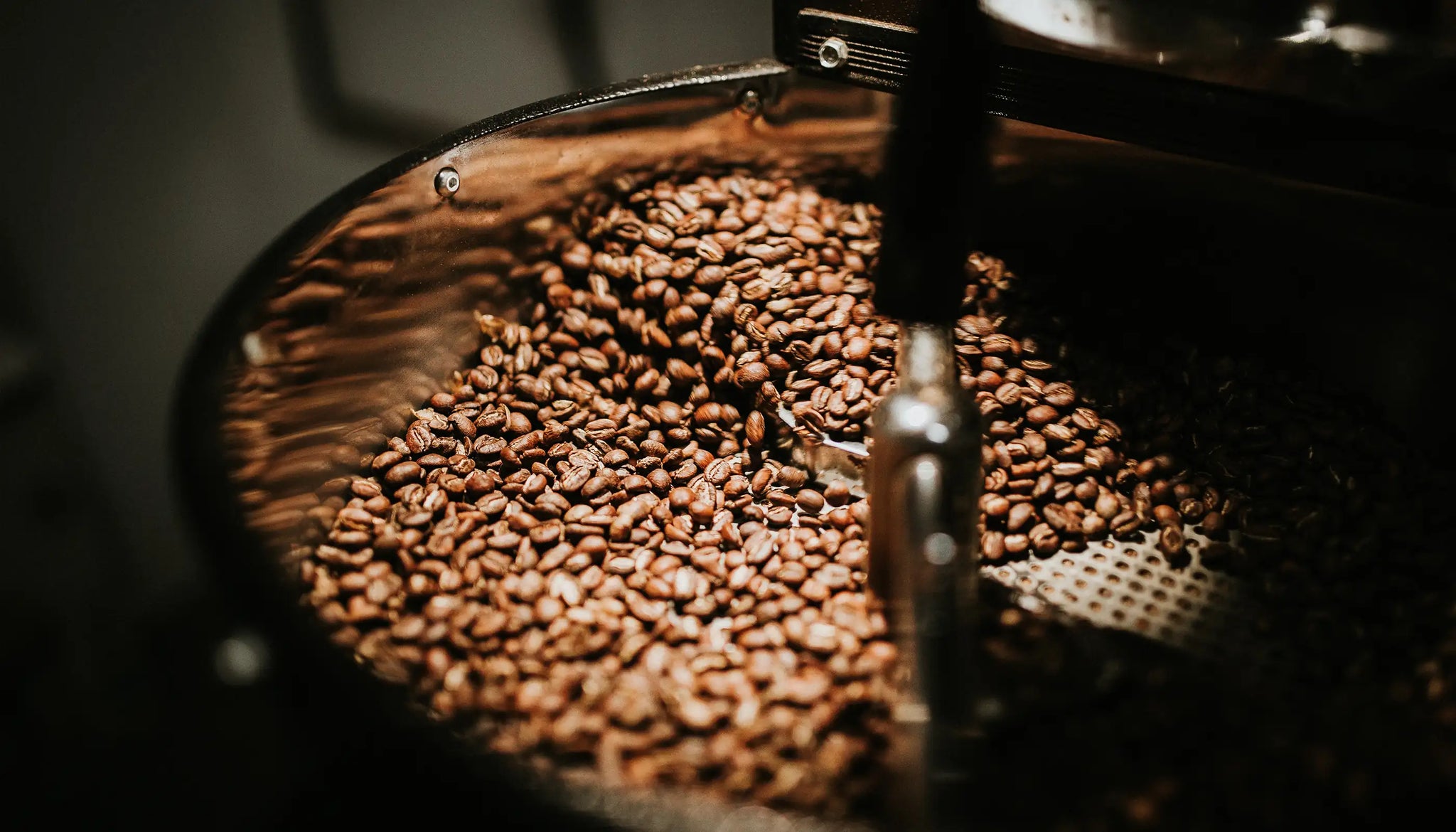The New Wave of Choosing SOE Single Origin Espresso at Home
Wiki Article
Coffee Beans 101: Every Little Thing You Need to Understand About Espresso and Blended Coffee Beans
When it comes to coffee, recognizing the subtleties of coffee and blended beans can transform your day-to-day mug. From the expanding procedure to roasting methods, every step plays a role in your coffee experience.Recognizing Coffee Beans: Varieties and kinds
When diving into the globe of coffee, comprehending the kinds and ranges of coffee beans is important for every single fanatic. You'll largely encounter 2 primary types: Arabica and Robusta. Arabica beans are recognized for their smooth, complicated flavors and reduced caffeine material, making them a preferred amongst coffee aficionados. On the other hand, Robusta beans pack a punch with a stronger, a lot more bitter taste and higher caffeine levels, typically used in espresso blends.Within these varieties, you'll find different local selections, each bringing special attributes. Ethiopian Yirgacheffe provides bright flower notes, while Colombian beans offer a well-balanced flavor account. As you explore, bear in mind to take notice of processing approaches like washed or natural, as they can greatly affect the last preference. By acquainting on your own with these beans and their flavors, you'll elevate your coffee experience and make even more educated options in your brewing journey.
The Expanding Refine: From Seed to Bean
When you check out the trip of coffee, it all begins with seed selection methods that establish the structure for quality. From there, cultivation and harvesting play important functions in making sure the beans thrive. Lastly, processing techniques change those harvested cherries into the coffee beans you enjoy.Seed Option Techniques
Choosing the ideal seeds is essential for generating top quality coffee beans, as it lays the foundation for the whole expanding procedure. You ought to start by selecting seeds from credible sources that focus on quality and genetic variety. Seek selections known to flourish in your particular environment and soil problems. Focus on the seed's age and storage space problems, as fresh seeds tend to sprout much better. When possible, go with natural seeds to lessen direct exposure to unsafe chemicals. Consider the condition resistance of various selections, as this can greatly impact your yield. Don't wait to seek advice from with local farmers or specialists to gain understandings into the finest seed options for your region. This expertise will enhance your coffee-growing experience.Growing and Harvesting
As you support your coffee seeds into growing plants, understanding the growing and harvesting process is important for attaining the best taste and top quality. Begin by planting your seeds in well-draining dirt, ideally in a shaded location to secure them from straight sunlight.Hand-picking is often the ideal technique to assure only the ripest cherries are selected. Timing is vital; harvesting too early or also late can affect the taste account of your beans.

Handling Methods Clarified
When you have actually harvested your coffee cherries, the next essential step is processing them to transform those dynamic fruits into the beans you'll make. There are 2 major techniques: the completely dry process and the wet procedure. In the completely dry procedure, you spread out the cherries out in the sun to completely dry, enabling the fruit to ferment and present unique flavors to the beans. On the other hand, the damp procedure involves eliminating the fruit quickly and fermenting the beans in water, resulting in a cleaner preference. After processing, the beans are hulled, arranged, and usually dried out once again. Each technique impacts the flavor profile, so trying out both can assist you find your favored brew. Recognizing these methods is vital to enjoying your coffee experience.Toasting Strategies: Exactly How Flavor Is Developed
When it involves roasting coffee beans, recognizing roast levels is essential to disclosing their one-of-a-kind tastes. Each roasting strategy influences the scent and improves the taste advancement procedure, offering you a richer coffee experience. Let's discover just how these variables integrated to elevate your day-to-day mixture.Roast Degrees Clarified
Roast degrees play a crucial role in forming the flavor profile of your coffee. When you choose a light roast, you'll take pleasure in brilliant acidity and fruity notes. As you move to a medium roast, you'll notice an equilibrium of sweetness and intricacy, commonly highlighting chocolate or sugar flavors. Dark roasts, on the various other hand, provide vibrant, great smoky characteristics with much less acidity, making them durable and abundant. Each degree arises from various roasting times and temperatures, affecting the beans' chemical make-up. By comprehending these degrees, you can better choose a coffee that matches your preference preferences. Trying out different roasts to uncover which one resonates with you, boosting your total coffee experience and enjoyment.Influence on Scent
The roast degree not only affects the taste of your coffee however also considerably impacts its fragrance. When you pick a light roast, you'll usually discover bright, floral notes that can make your coffee smell fresh and vibrant. As the beans darken, the scent shifts; a tool roast highlights a lot more well balanced, caramelized scents, while a dark roast often tends to feature vibrant, great smoky touches. Each toasting strategy launches different unstable substances, shaping just how your coffee scents. Furthermore, the quality of the beans plays a vital role; fresh baked coffee releases more aromatic oils, enhancing that enticing scent. So, take notice of the roast degree-- it's crucial to revealing the full aromatic experience of your brew.Taste Growth Process
As you explore the taste development procedure, you'll find that roasting strategies play a vital function in forming the preference profile of your coffee. The toasting temperature level and time directly influence the acidity, sweet taste, and bitterness of the beans. Light roasts keep even more of the bean's original tastes, highlighting fruity and floral notes. Medium roasts balance acidity and body, using an all-around taste. Dark roasts, on the various other hand, draw out vibrant, smoky characteristics while reducing the bean's inherent top qualities. Throughout toasting, chain reactions, like the Maillard response and caramelization, change the beans and boost their complexity. Explore various roasting degrees can aid you discover your perfect brew, so do not think twice to taste and discover the abundant range of flavors!Espresso vs. Blended Coffee: Secret Differences
Espresso and combined coffee each deal distinct experiences that accommodate various preferences and preferences. Espresso is a focused coffee made by requiring hot water via finely-ground coffee beans, resulting in an abundant, bold flavor and a luscious layer of crema on top. It's usually delighted in as a shot or made use of as a base for beverages like cappucinos and coffees.On the various other hand, mixed coffee combines numerous beans from different regions, producing an extra balanced flavor profile. You'll frequently discover blends that highlight sweet taste, body, or level of acidity, making them functional for various brewing methods. While coffee concentrates on strength, blended coffee might supply a broader series of tastes that can transform with each sip.
Eventually, your selection between espresso and combined coffee boils down to your personal preference. Whether you long for a leisurely mug or a quick shock, both alternatives have something delicious to use.

Developing Methods: Unlocking the Perfect Cup
When it pertains to developing coffee, locating the right technique can transform your experience and elevate your mug. Each developing technique has its one-of-a-kind appeal and can substantially affect your coffee's flavor and aroma. Utilizing a French press enables you to take pleasure in a abundant and robust mixture, while a pour-over approach supplies a tidy, intense cup with distinctive flavors.If you favor espresso, spending in a top quality device can assist you understand the art of drawing shots. For comfort, a single-serve capsule system provides speed without compromising taste.
Don't fail to remember regarding cool mixture, which supplies a smooth, much less acidic coffee perfect for warm days. Experiment with various approaches to uncover what resonates with your taste.
Sampling Notes: Determining Flavor Profiles
Exactly how can you really value your coffee if you do not know what tastes to search for? Sampling notes are your guide to understanding the intricate world of coffee. When you sip, pay attention to the initial tastes that strike your taste buds. You could find fruity notes, like berry or citrus, or possibly a nutty touch. As you proceed to taste, observe how the flavors develop-- this is called the "surface." Some coffees may leave a chocolatey or sugar aftertaste, while others might have a bright, clean coating.Think about the body of the coffee, also; is it light and airy or thick and syrupy? Don't neglect level of acidity; a brilliant acidity can include sprightliness, while a reduced acidity could provide a smoother experience. By identifying these taste accounts, you'll deepen your link with each cup, making coffee tasting a delightful journey of discovery.

Tips for Choose and Keeping Coffee Beans
Storing and choosing coffee beans appropriately can greatly enhance your developing experience. Start by selecting high-quality beans that suit your taste - SOE.As soon as you have your beans, keep them in an airtight container to avoid exposure to air, light, and moisture. A dark, great location functions best, so stay clear of maintaining them in the fridge or freezer, as this can introduce dampness. Only grind the quantity you need to preserve quality; entire beans maintain flavor longer than pre-ground coffee.
Lastly, attempt to utilize your beans within 2 to 4 weeks after opening for peak preference. Complying with these tips will guarantee your coffee stays satisfying and tasty, boosting your everyday mixture to brand-new heights.
Regularly Asked Concerns
How Long Do Coffee Beans Stay Fresh After Roasting?
Coffee beans stay fresh for regarding two weeks after toasting - SOE. You need to keep them in an impermeable container, away from light and dampness. After that, their taste and fragrance start to decrease substantially
Can I Mix Different Coffee Bean Varieties?
Definitely, you can blend various coffee bean varieties! Trying out blends can improve tastes and produce a distinct taste account. Just make certain to stabilize the strengths and characteristics of each range for the finest results.What Is the Suitable Grind Dimension for Espresso?
For coffee, you'll want a great grind dimension, regarding the texture of salt. This allows suitable extraction, causing an abundant, delicious shot. Experiment a little bit to find what suits your preference best!Exactly How Does Altitude Affect Coffee Bean Flavor?
Altitude impacts coffee bean flavor by affecting the growth price and chemical structure. Higher elevations result in slower growth, which enhances acidity Single Origin Espresso and intricacy, offering your coffee a one-of-a-kind and dynamic preference you will not fail to remember.Exist Decaffeinated Versions of Coffee Beans?
Yes, there are decaffeinated versions of coffee beans. You can enjoy a rich coffee flavor without the high levels of caffeine kick. Just search for "decaf" blends at your regional coffeehouse or specialized shop.Coffee Beans 101: Everything You Required to Know About Espresso and Blended Coffee Beans.
When diving right into the world of coffee, understanding the kinds and selections of coffee beans is crucial for every lover.When it comes to toasting coffee beans, comprehending roast levels is essential to exposing their distinct flavors. Coffee is a concentrated coffee made by requiring hot water through finely-ground coffee beans, resulting in a rich, vibrant taste and a luscious layer of crema on top.On the various other hand, combined coffee incorporates different beans from different regions, developing a much more balanced flavor profile.
Report this wiki page